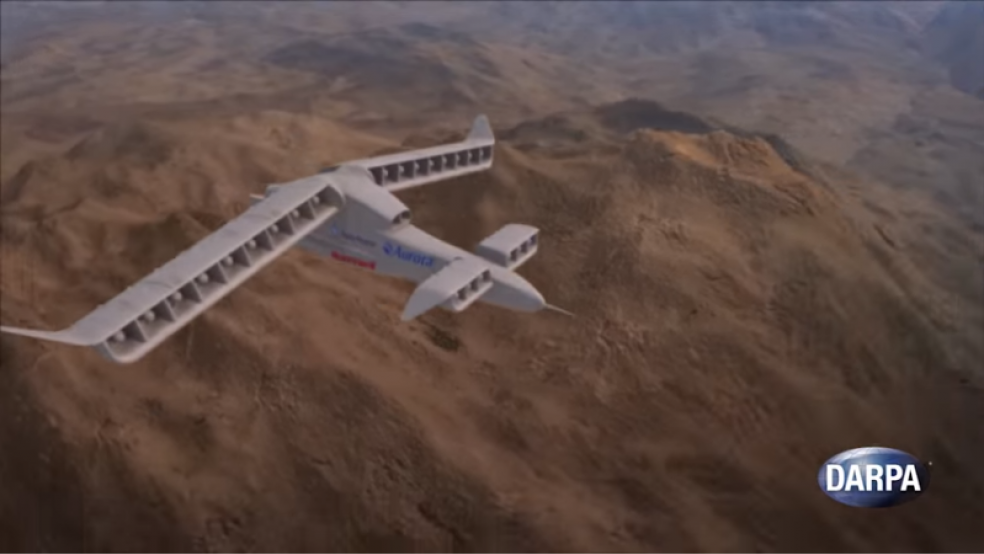The Defense Department’s list of cutting-edge aircraft with oddball designations grew by one last week when the Defense Advanced Research Projects Agency unveiled the concept for its VTOL X-Plane.
Work on the Vertical Takeoff and Landing Experimental Plane began in 2013 but took a major leap forward when DARPA, the Pentagon’s innovation shop, announced it had awarded Aurora Flight Sciences an $89 million contract to build a flying prototype, dubbed LightningStrike. The goal is to be airborne by 2018.
The U.S. military has long pursued vertical takeoff aircraft that combine the characteristics of planes and helicopters. The V-22 Osprey tiltrotor aircraft has become a workhorse for the Marines, and the LightningStrike prototype is meant to push the hybrid concept further to create a plane that can fly faster, carry more and use less fuel while landing and taking off anywhere in the world, no runway needed. The unmanned aircraft is supposed to reach sustained speeds between 300 and 400 knots and carry a load of 40 percent of its gross weight of roughly 12,000 pounds.
The plane’s power will come from a lone Rolls Royce T406 turboshaft engine, the same kind that is used on the V-22 Osprey. The engine will be mounted inside the fuselage and pump out three megawatts of electrical power, which in turn will drive 24 fans – nine on each wing and three inside each canard at the front of the aircraft.
Related: Here’s the New, Secret Warplane Everyone Will Soon Be Talking About
The idea behind programs like the X-Plane is to develop new technologies rapidly and use those technologies in multiple applications. The electric drive system in the LightningStrike could represent a significant advancement in flight technology.
“Imagine electric aircraft that are more quiet, fuel-efficient and adaptable and are capable of runway-independent operations,” Ashish Bagai, DARPA program manager, said in a statement. “We want to open up whole new design and mission spaces freed from prior constraints, and enable new VTOL aircraft systems and subsystems.”
If successful, the odd-looking aircraft could end up influencing the design of civilian transport somewhere down the road.





